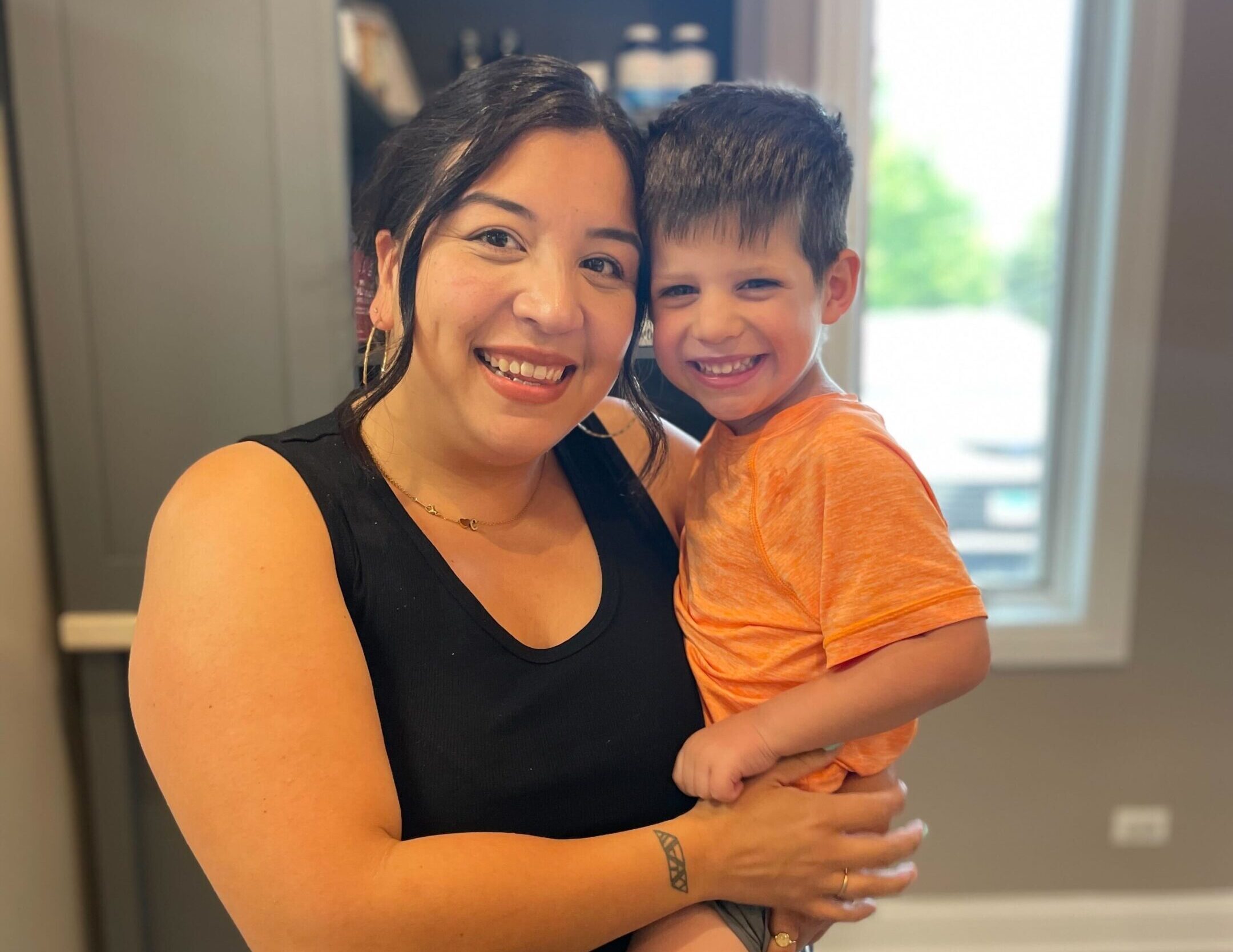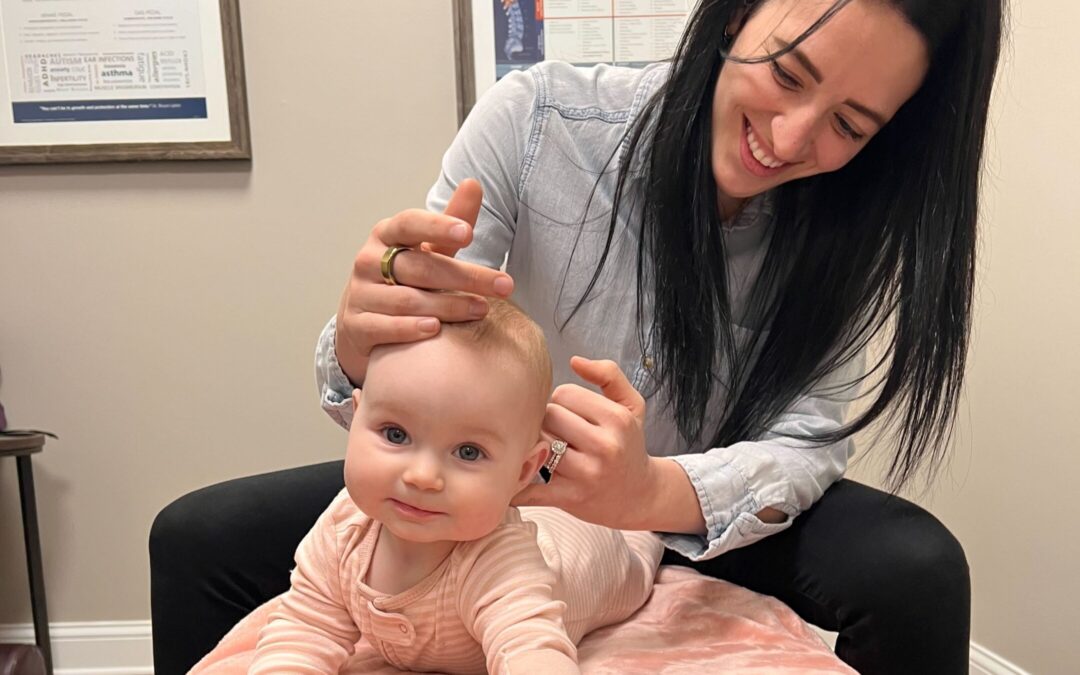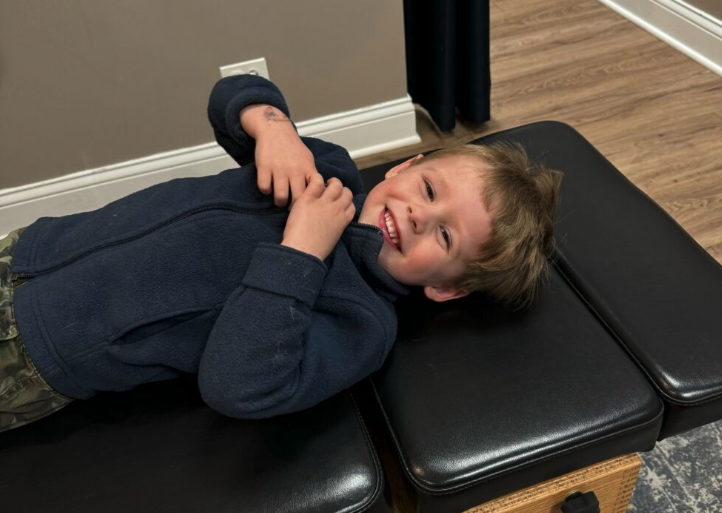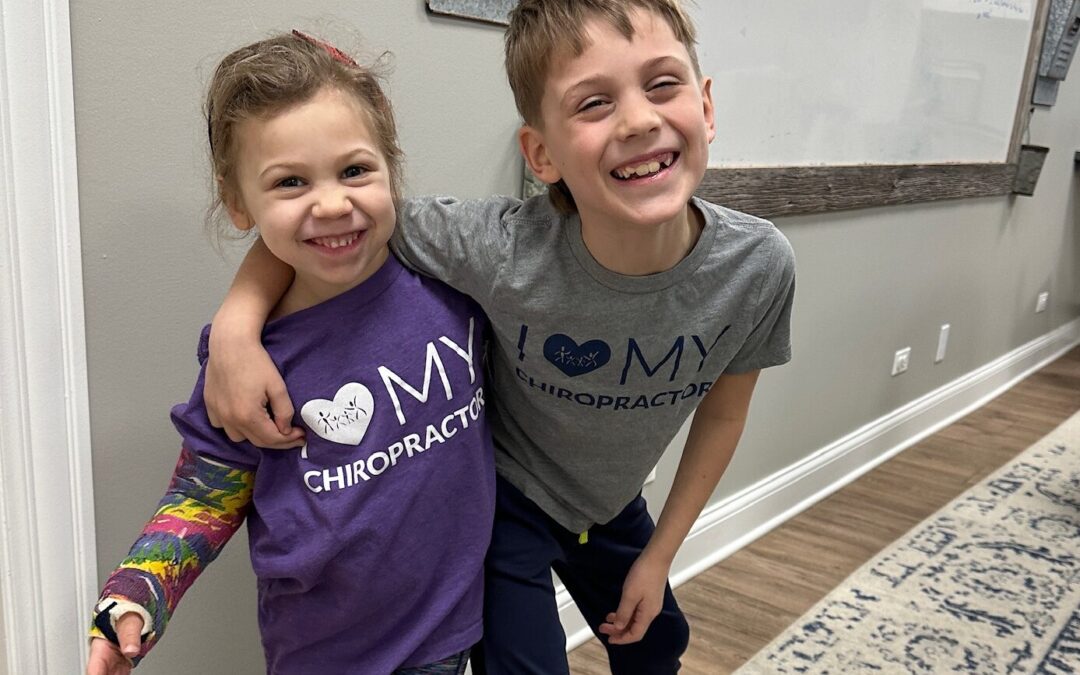Living with Sensory Processing Disorder (SPD) can be a challenging experience, both for children and their families. The daily struggles faced by those with SPD often go unnoticed, leaving parents whose children struggle with sensory-related behavior or other issues to feel judged and isolated.
That was certainly the case for Logan’s parents, who tried every traditional therapy and method out there to calm his sensory storm and help him better manage his emotions, calm his behavior, and get his body to appropriately recognize sensory cues to common everyday things like going to the bathroom and getting dressed.
Just like millions of other children, Logan struggled with sensory processing issues as early as infancy, and despite what his parents were told by their pediatrician again and again, he did not grow out of it. Instead, his sensory nervous system grew into more stress, dysfunction, and everyday struggles.
Finally, his parents heard about our Perfect Storm work and were able to learn what’s really causing Sensory Processing Disorder and how they could help calm Logan’s sensory storm naturally, without the use of drugs or even traditional therapies like PT, OT, and Speech Therapy.
In this article, we will explore what SPD is, its symptoms, causes and triggers, and all available care options. If you feel like you’ve tried everything and are running out of hope as your child’s sensory issues spill over into chronic challenges like ADHD, anxiety, and even autism, then this article is for you!
What is Sensory Processing Disorder?
Sensory Processing Disorder, also known as Sensory Integration Dysfunction, is a condition that affects how the brain processes and responds to sensory information from the environment. While most people can filter and interpret sensory input effectively, individuals with SPD experience difficulties in doing so.
Imagine a child with SPD entering a crowded room. The overwhelming stimuli, such as bright lights, loud noises, and various textures, can be unbearable. These children struggle to regulate their responses, leading to behavioral issues, tantrums, or a complete shutdown, where they become unresponsive. This is known as sensory overload.
But it’s not just bright lights, big crowds, and loud noises that children with sensory issues struggle with. They also frequently struggle with common everyday functions such as brushing their teeth, combing their hair, getting dressed, wearing certain clothes, and trying new foods.
What are the Symptoms of Sensory Processing Disorder?
SPD manifests in various ways, and the symptoms can vary from child to child. Here are some common signs that may indicate the presence of SPD:
- Hypersensitivity to stimuli: Individuals with SPD may be excessively sensitive to certain sensory inputs, such as bright lights, loud sounds, strong smells, or specific textures. These stimuli can trigger intense reactions and discomfort.
- Sensory overloads: When exposed to overwhelming sensory input, individuals with SPD may experience sensory overload. This overload can manifest as emotional meltdowns, tantrums, or withdrawal from the environment.
- Light, sound, and touch sensitivity: Bright lights, loud noises, and certain types of touch can be particularly distressing for individuals with SPD. They may struggle with loud or sudden sounds, crowded or visually stimulating environments, or certain fabrics/textures against their skin.
Understanding these symptoms is crucial for identifying and addressing SPD early on. Sadly, many pediatricians still today do not fully understand Sensory Processing Disorder and really neurosensory development overall, leaving them to frequently and mistakenly tell parents, “don’t worry, they’ll grow out of it,” which, as you’ll learn in the following sections, is rarely the case.
These symptoms are a sign of an underlying dysfunction in the nervous system’s ability to properly perceive input from its environment (both internal and external) and appropriately coordinate and respond to that sensory information. Once the neurological dysfunction is addressed, children can overcome sensory challenges and greatly improve their quality of life with the information and action steps below.
What Causes Sensory Processing Disorder?
Just like Autism Spectrum Disorder (ASD) and ADHD, Sensory Processing Disorder is now strongly correlated with early exposure to stressful events and even physical injuries during the following three (3) crucial developmental periods:
- Pregnancy: Multiple research studies have now explored the link between high-risk and high-stress pregnancies and neurodevelopmental disorders such as SPD and ASD in kids later on in life, along with immune and inflammatory-based conditions as well.
- Labor and Delivery: Multiple birth interventions such as forceps delivery, vacuum extraction, induction, and cesarean delivery all lead to high levels of physical tension and even trauma on the delicate tissues of the brainstem and upper neck, which house the vagus nerve and are responsible for autonomic nervous system regulation and function, motor tone and coordination, immune and digestive function, and so much more.
- Early Infancy and Childhood: Clinically, we continue to observe strong correlations with common infant health challenges such as colic, reflux, constipation, and chronic ear infections. Many of the medications used to treat these health challenges, especially frequent use of antibiotics, can wreak havoc on the gut and lead to neurosensory challenges via the brain-gut connection and vagus nerve as well.
While the traditional medical system and pediatricians continue to primarily blame genetics and tell parents their child will “grow out of” their constant sensory meltdown, tantrums, and day-to-day struggles, those of us in clinical practice each day really working closely with these families and diving deep into their case histories know better.
The Role of Subluxation, Dysautonomia, and the Vagus Nerve in Sensory Challenges
In summary, whether a child had some or all of these triggers and stressors throughout their crucial developmental period, they are known to stimulate the Sympathetic Nervous System (fight or flight) into overdrive, and over time suppress or shut down the Parasympathetic Nervous System and Vagus Nerve (specifically vagal tone). This neurological imbalance is known as its own condition called dysautonomia, and it is highly correlated with SPD, ASD, ADHD, Anxiety, and more.
Within all of this there is one more scientific term it’s important for parents of sensory kids to know about, something called subluxation. Subluxation contributes to dysautonomia and neurosensory dysfunction, and has three (3) primary components:
- Misalignment: This initial misalignment of the NeuroSpinal System is most commonly caused by birth intervention and trauma, but also by common everyday things like childhood falls, injuries, poor posture, prolonged sitting, etc.
- Fixation and Decreased Range of Motion: Once the misalignment of the neuromuscular system sets in, movement and mobility if decreased or limited. This then alters the neurosensory input into the brain and contributes to the next element, strongly connecting it with SPD.
- Neurological Interference and Imbalance: Once the movement of the upper neck and NeuroSpinal System is reduced, it limits the amount of healthy proprioception (the sensory perception of movement) that can reach the brain and nervous system, shifting it into a sustained sympathetic fight-or-flight response and dysautonomia.
Put this all together and you can see why we refer to it as The Perfect Storm.
Drug-Free Care Options for Sensory Processing Disorder
Fortunately, there are multiple care options available to help kids and families with SPD manage their sensory challenges and greatly improve their quality of life.
Often by the time parents learn about the things we just covered with birth trauma, subluxation, dysautonomia, the vagus nerve, and the role Neurologically-Focused Chiropractic Care can play in helping calm the sensory storm, parents have already exhausted traditional therapies such as PT, OT, and Speech.
Additionally, most parents we meet have already tried all the standard behavioral modifications, such as reward charts and various punishments or discipline, with little to no effect.
And lastly, so many incredible parents today have also then got online and learned all about the role that toxins and certain foods like gluten, dairy, preservatives, and food dyes play in triggering sensory issues and meltdowns as well. These families have significantly changed their lifestyle and the child’s diet in so many wonderful ways, but again often still see the sensory struggles and neurological issues persist.
If you’ve tried everything already and want to fully address the root causes of Sensory Processing Disorder, or you’re just getting started looking for help, it’s time to learn all about Neurologically-Focused Pediatric Chiropractic, and specifically our unique Neuro-Tonal approach.
Chiropractic Care, Dysautonomia, and HRV
Our clinical protocols do not seek to treat or cure SPD but rather look to address the root cause head on. As discussed above, the primary neurological dysfunction children with sensory issues are struggling with is typically an excessive sympathetic nervous system “fight or flight” response, and in turn, a suppressed or weakened parasympathetic “rest and relax” side of the nervous system.
Multiple research studies like this one have explored the link between these factors of dysautonomia and vagus nerve dysfunction (altered tone), and it truly is the key to calming a child’s sensory storm and improving their quality of life significantly.
In that same study, the researchers and clinicians used an incredible piece of technology called Heart Rate Variability (HRV), which measures Parasympathetic Nervous System activity and is strongly correlated in the literature as a strong marker for behavioral regulation.
Therefore any professionals working with children struggling with Sensory Processing Disorder need to be using HRV technology as the foundation of their care protocols and programs, allowing them to not only establish a baseline at the onset of care, but also to track and monitor progress via actual neurological change and improvement.
Measuring and tracking true Autonomic Nervous System and Vagus Nerve sensory functions are, therefore, the foundation of our work as PX Doctors. Each and every child struggling with sensory issues or other neurodevelopmental challenges first get an HRV test to measure their overall adaptability and parasympathetic or vagal nerve tone.
Below is an image with a series of three (3) HRV Scans performed on a child struggling with Sensory Processing Disorder, ADHD, and Anxiety. The first scan on the far left shows the small white box way in the lower left quadrant of the HRV plot, indicating his parasympathetic nervous system and vagus nerve are both suppressed and shut down, allowing his sympathetic sensory overload system to run out of control.
Then as care progresses over 2-3 months, you can see the white box move towards the center line and higher up towards the green circle, indicating that his subluxation and dysautonomia were vastly improved and his nervous system, now much calmer, balanced, and regulated.
In addition to HRV, we ALSO run two (2) additional tests, NeuroThermal and NeuroSensory EMG, to complete the overall INSiGHT Scans and neurological exam. Together these three (3) collective scans can function as the first Sensory Processing Disorder Test that actually looks beyond symptoms and surveys and dives deep into the root neurological cause.
Once we have these incredible INSiGHT Scans done for a child struggling with Sensory Processing Disorder, we can then put together a fully customized and personalized Care Plan made uniquely for that child. Once care begins, each and every Neuro-Tonal Adjustment our doctors are trained to make is designed to address subluxation and dysautonomia directly.
By activating and stimulating the Vagus Nerve and Parasympathetic Nervous System repeatedly over a period of many weeks to months, we then start to see an incredible decrease in the sustained sympathetic sensory storm so many kids have been stuck in since birth.
The first improvements parents typically notice are with sleep, proprioception and motor planning, and digestion (many children with sensory issues also struggle with constipation and bedwetting, since they rely on proper sensory input and communication between the brain and body). From there, the brain and nervous system can get back on track developmentally, and parents start to see improvements in behavioral and emotional regulation, along with other sensory-related challenges.
Get Drug-Free Help for Sensory Challenges
Living with Sensory Processing Disorder can be challenging, but with the right support and care, children with SPD can thrive and get past their challenges.
The earlier parents and providers are able to address the root causes and improve neurological function the better, and the faster you’ll see results.
If you suspect your child may have SPD, consulting with a local PX Doctor who specializes in sensory disorders can provide valuable guidance and access to the drug-free care options you’ve been searching for.
It’s been many years since Logan was stuck deep in his sensory storm, and now he’s going into 8th grade, thriving in school, and truly living his best life! Check out our PX Docs Directory here and get your sensory child scheduled for an in-depth consultation, INSiGHT Scans, and HRV right away!
Remember, you are not alone in this sensory journey, there is help available. Take the first step and find the doctor, the care, and the community you and your family deserve!





